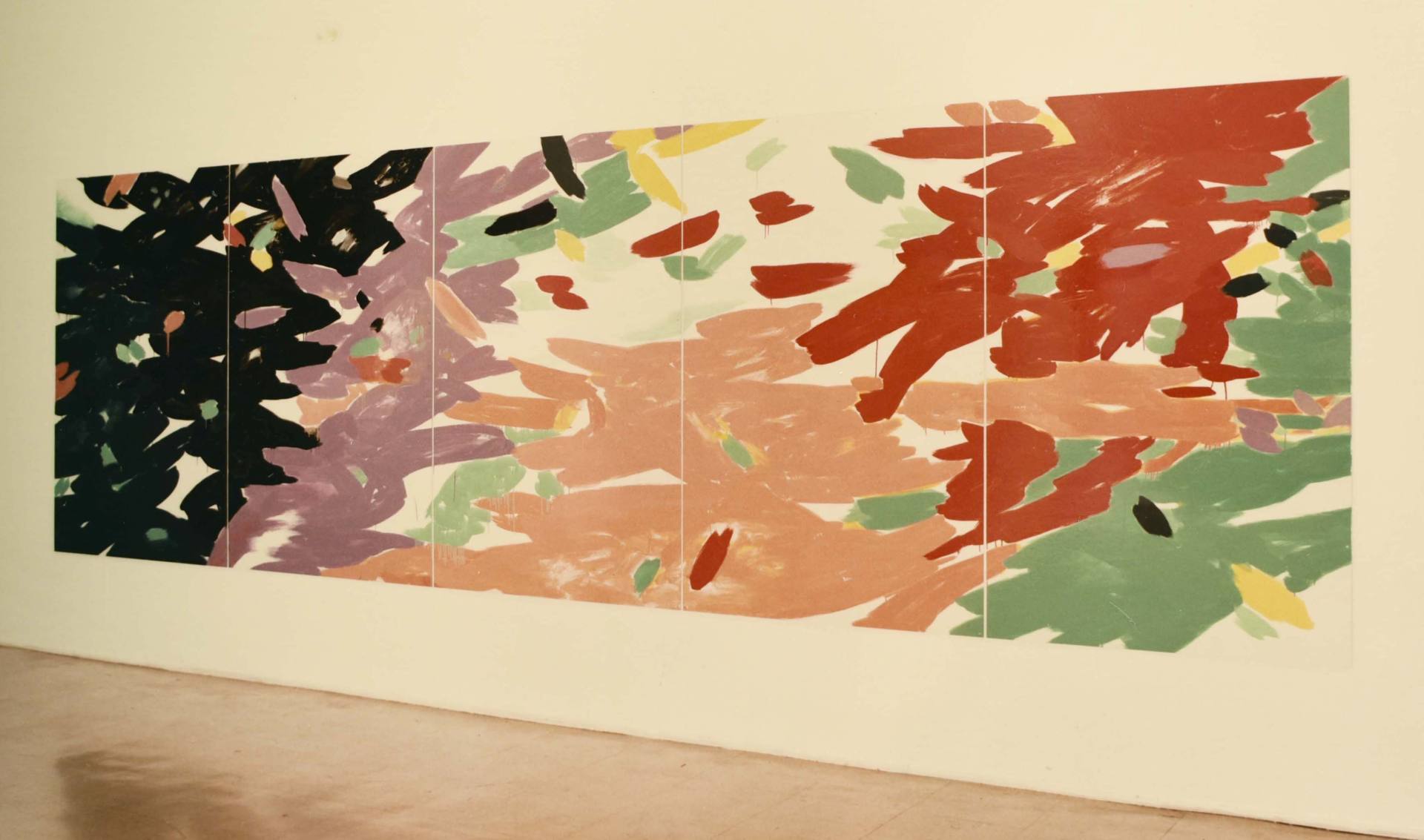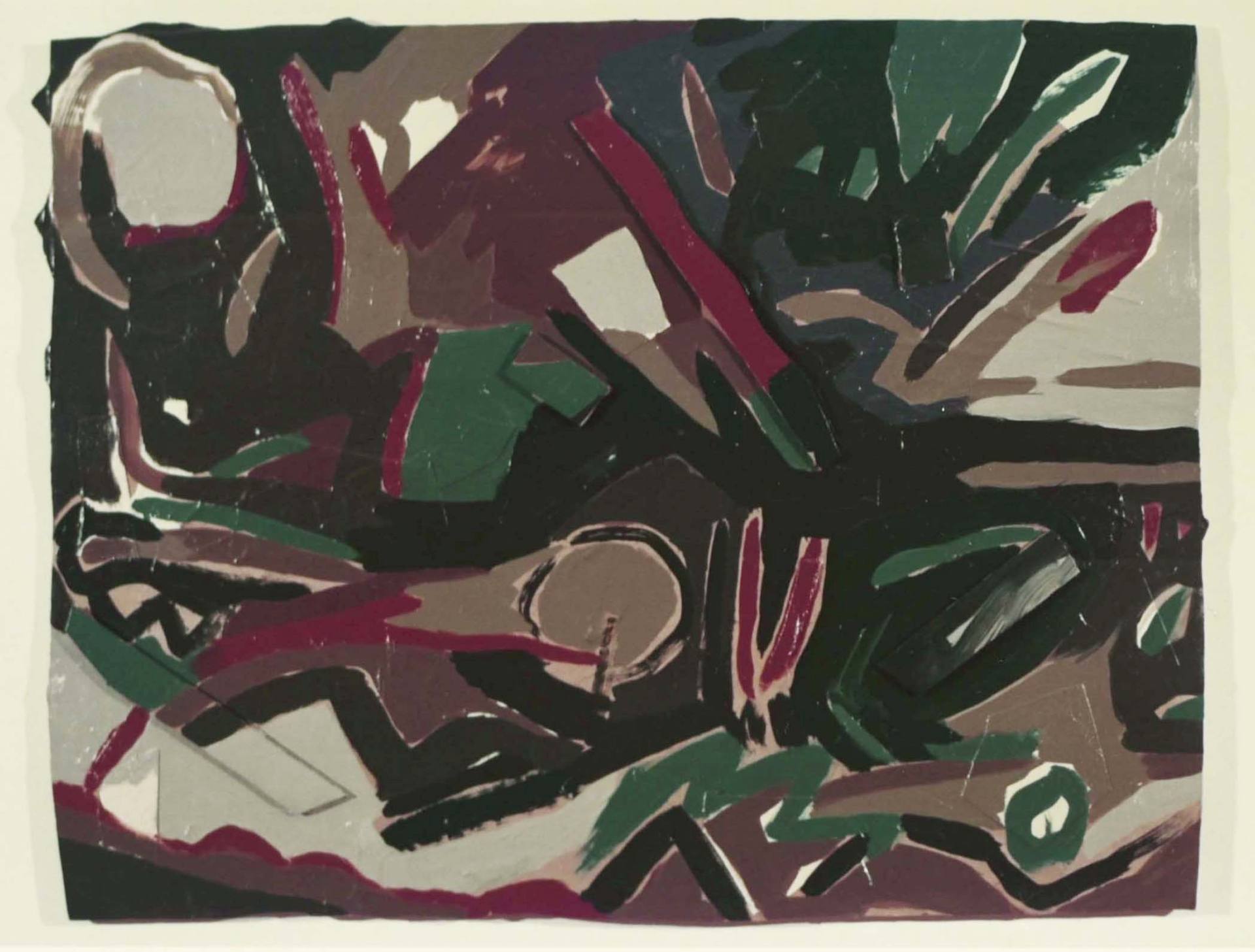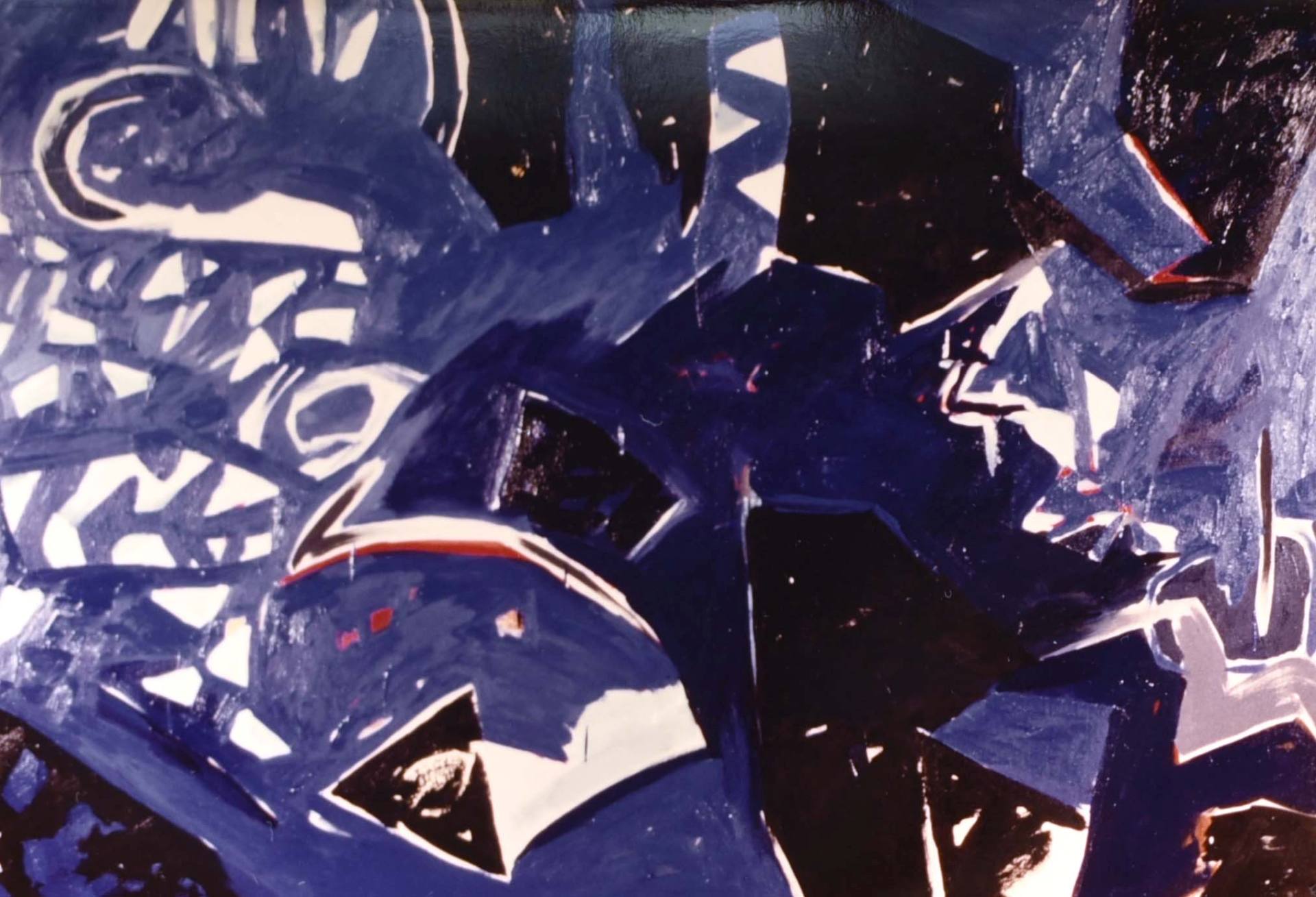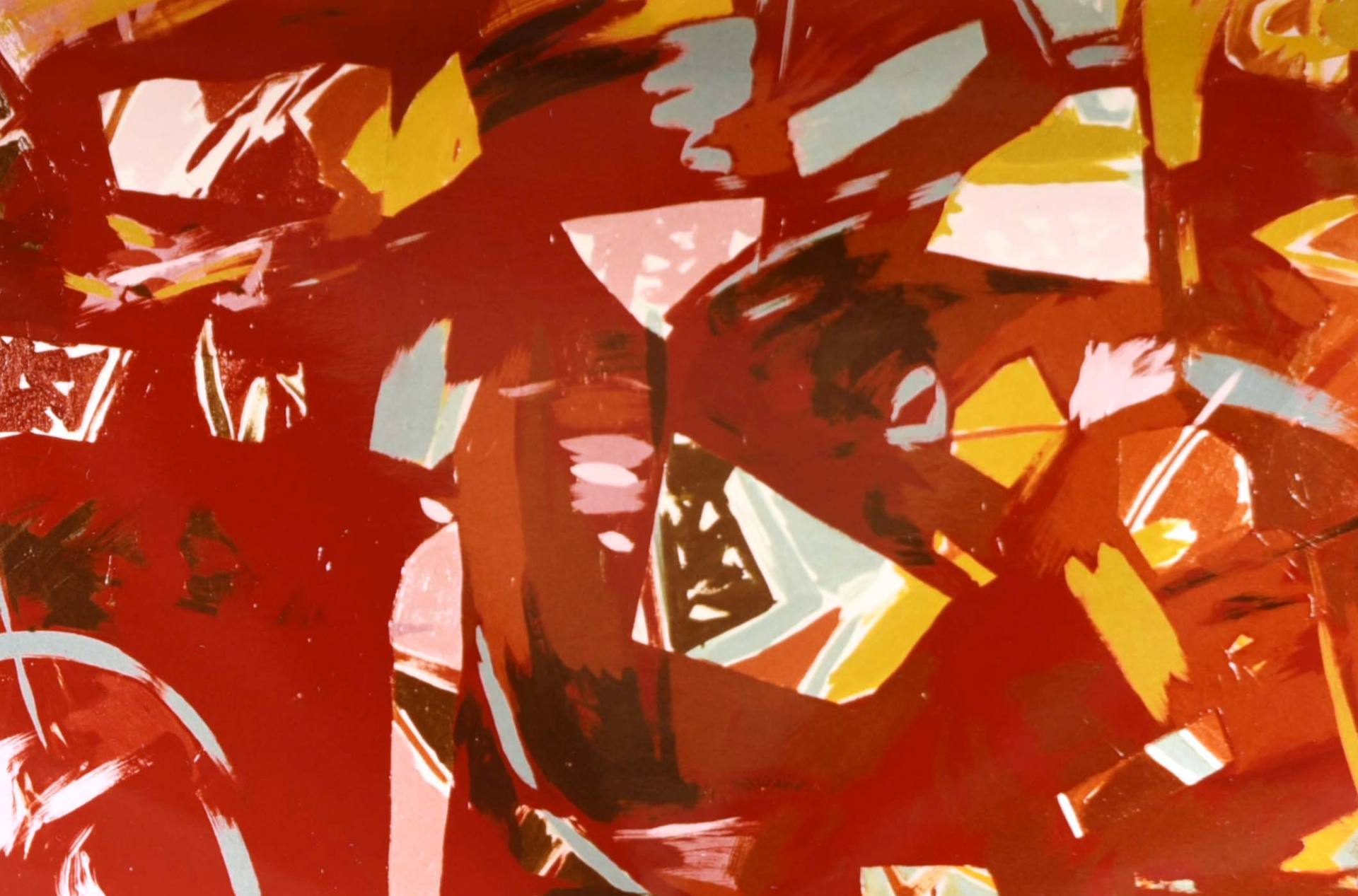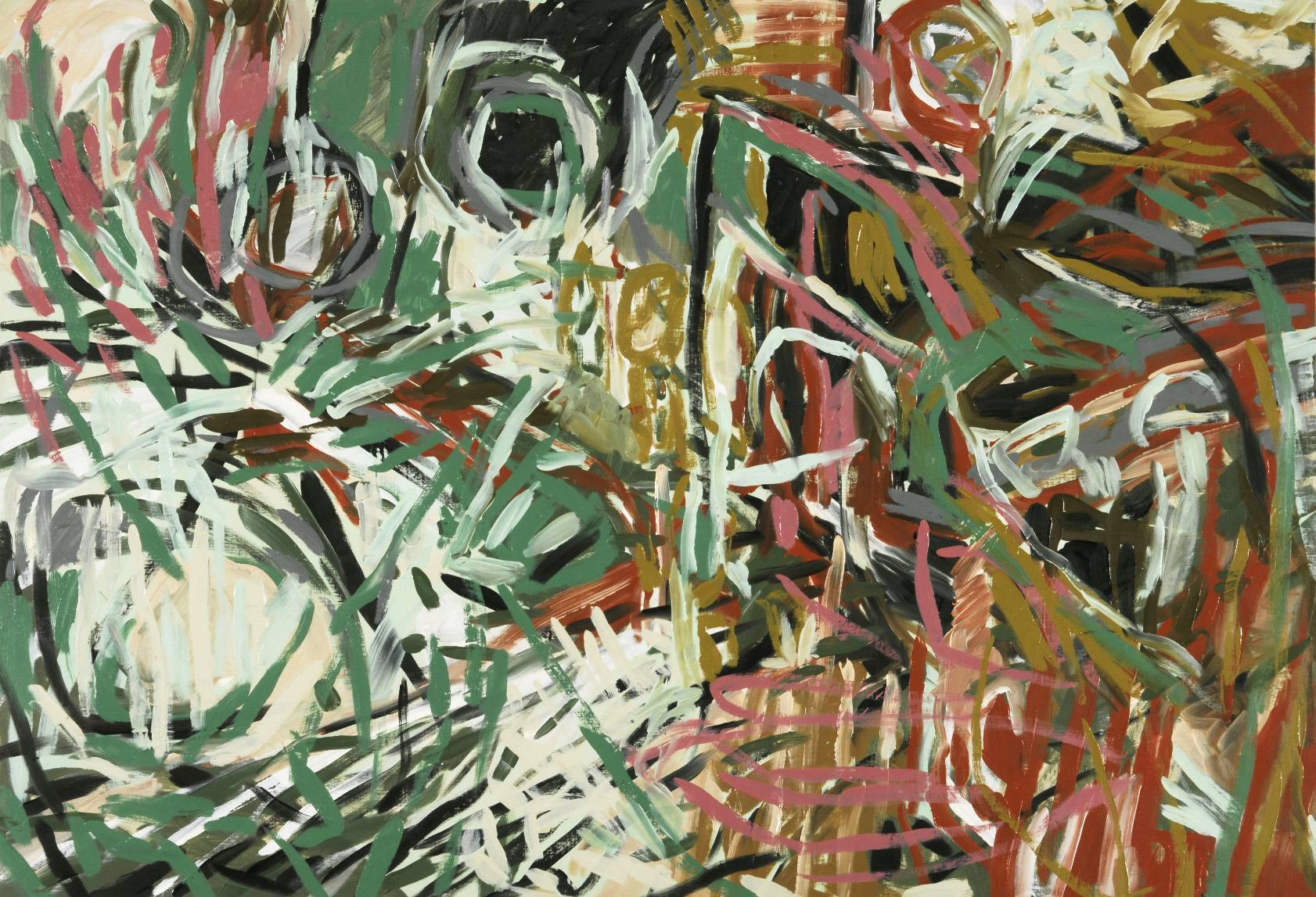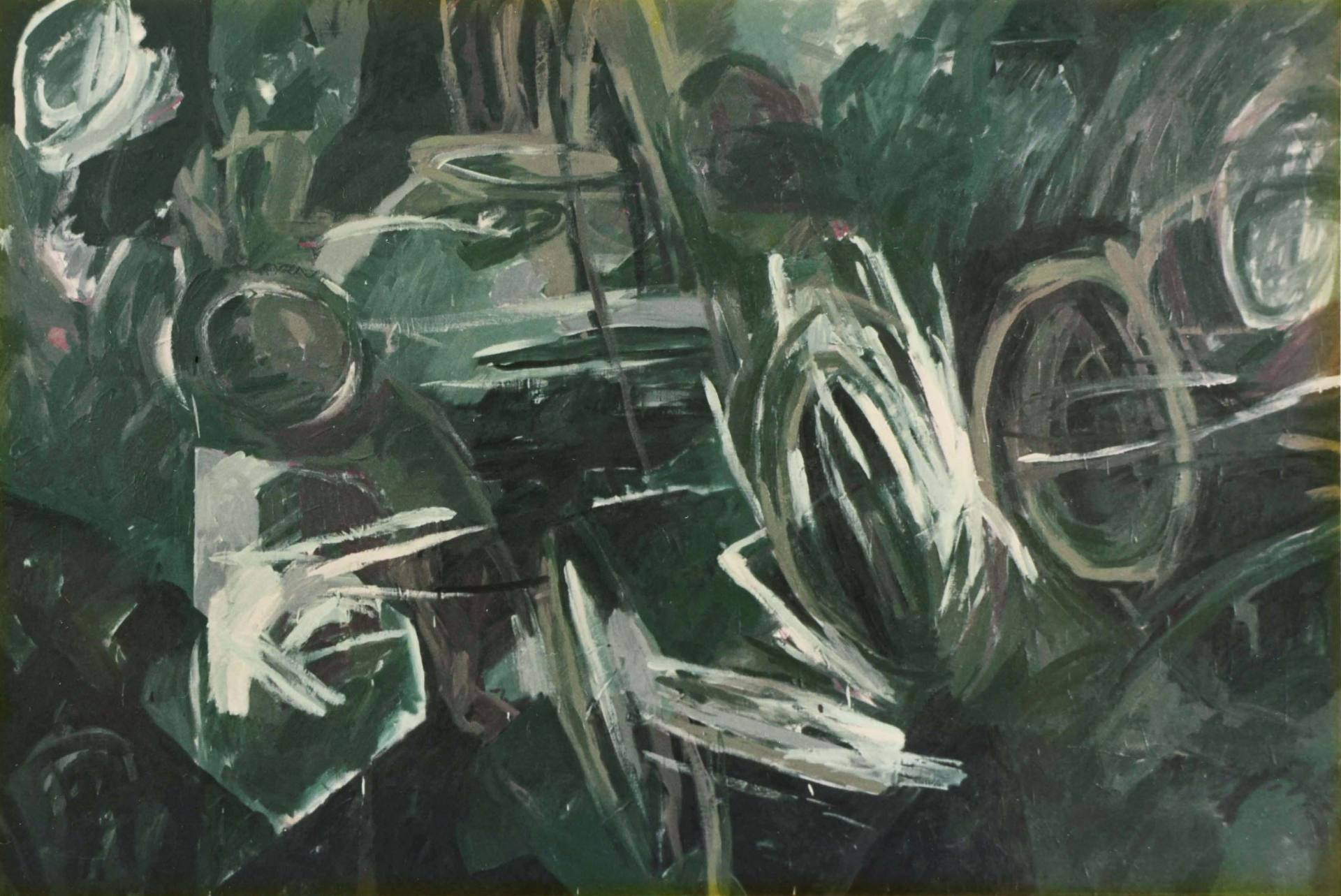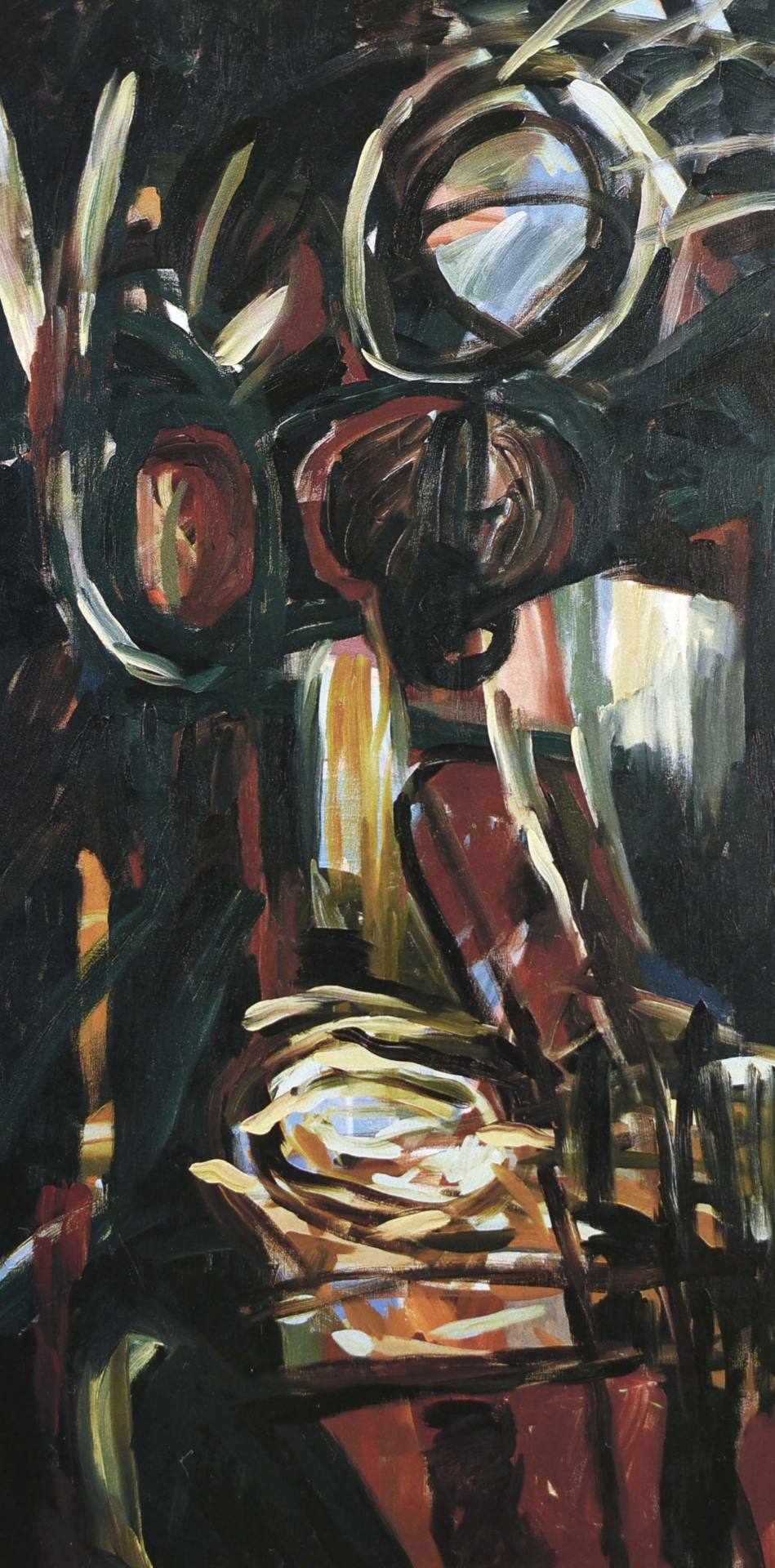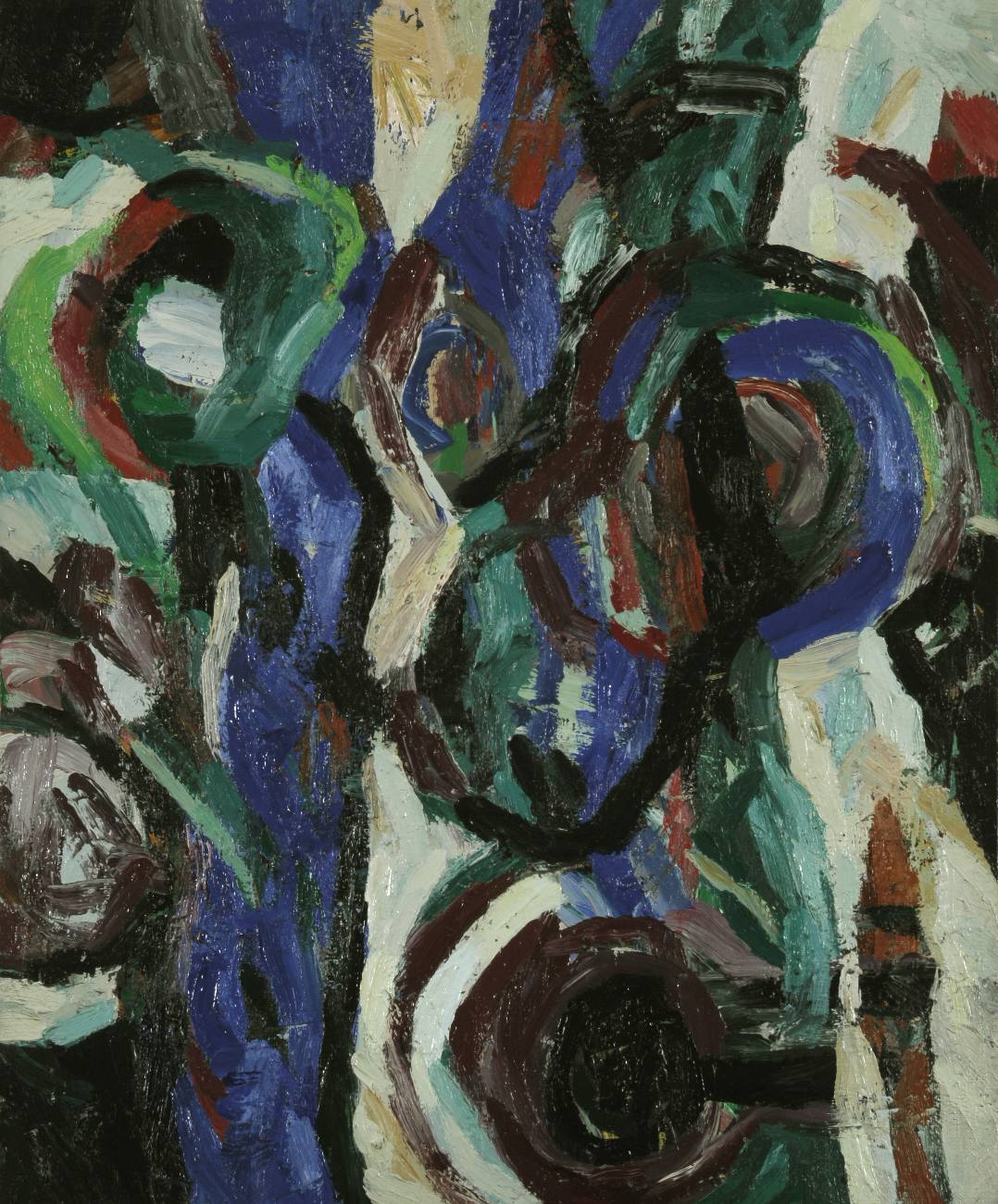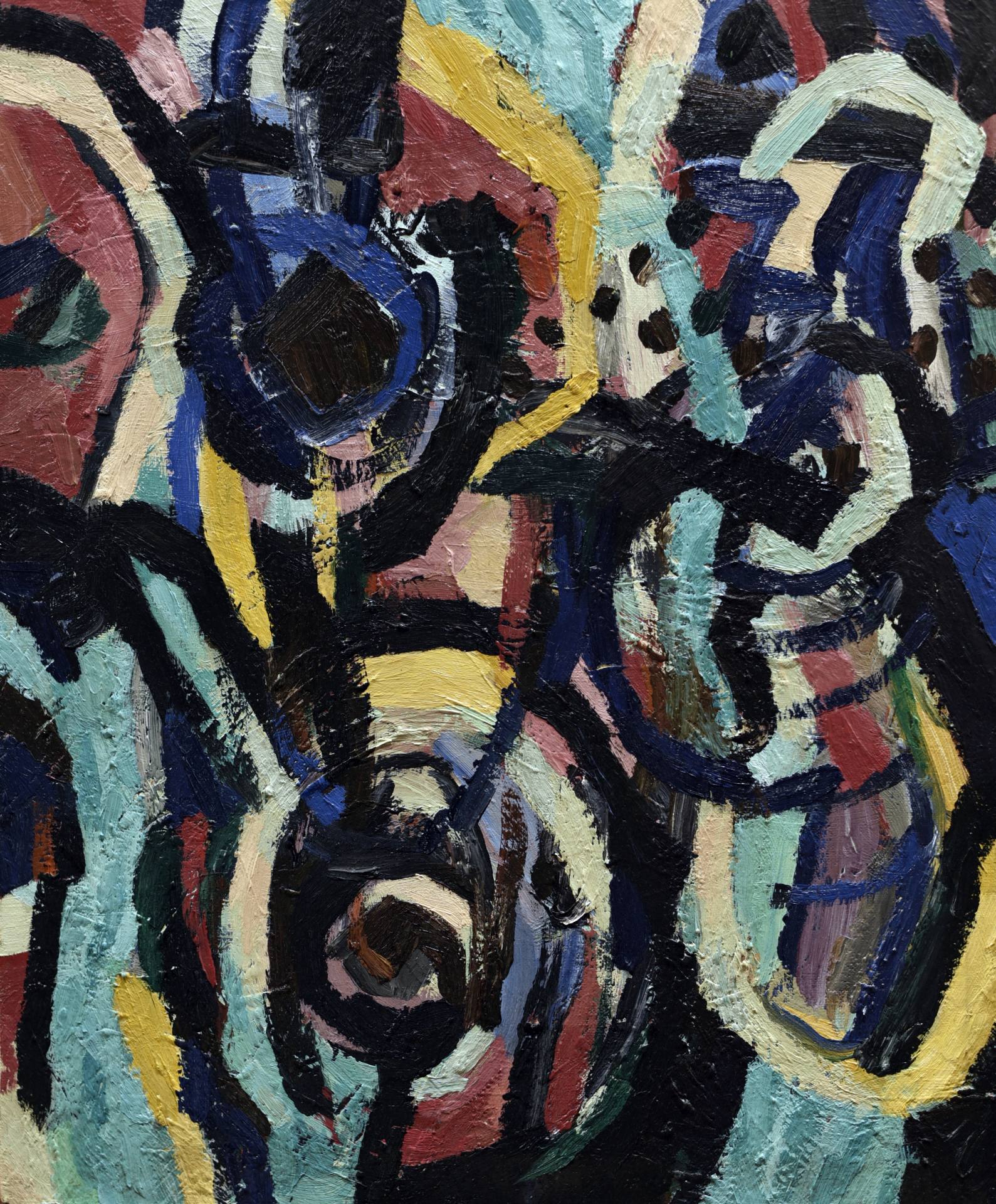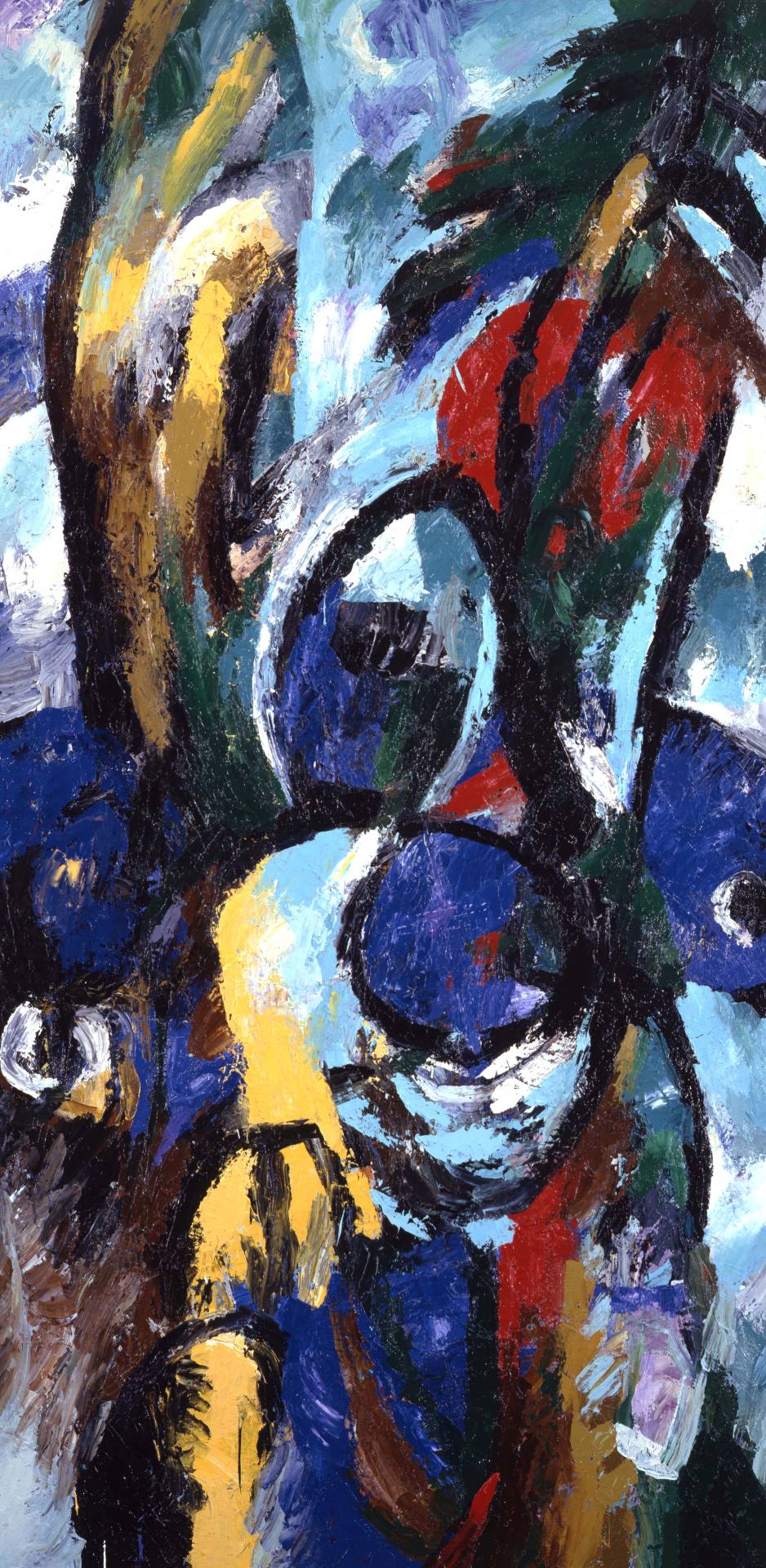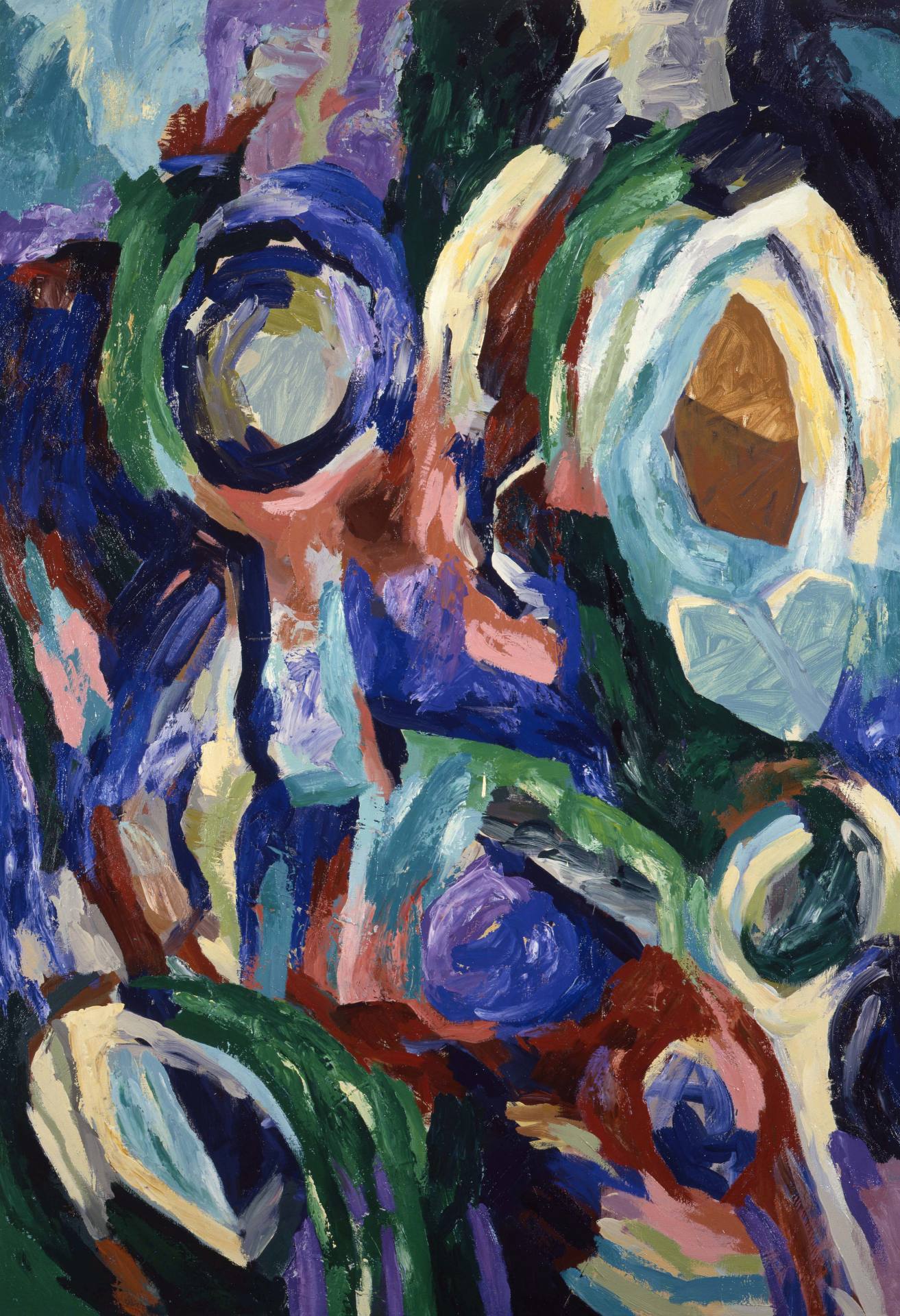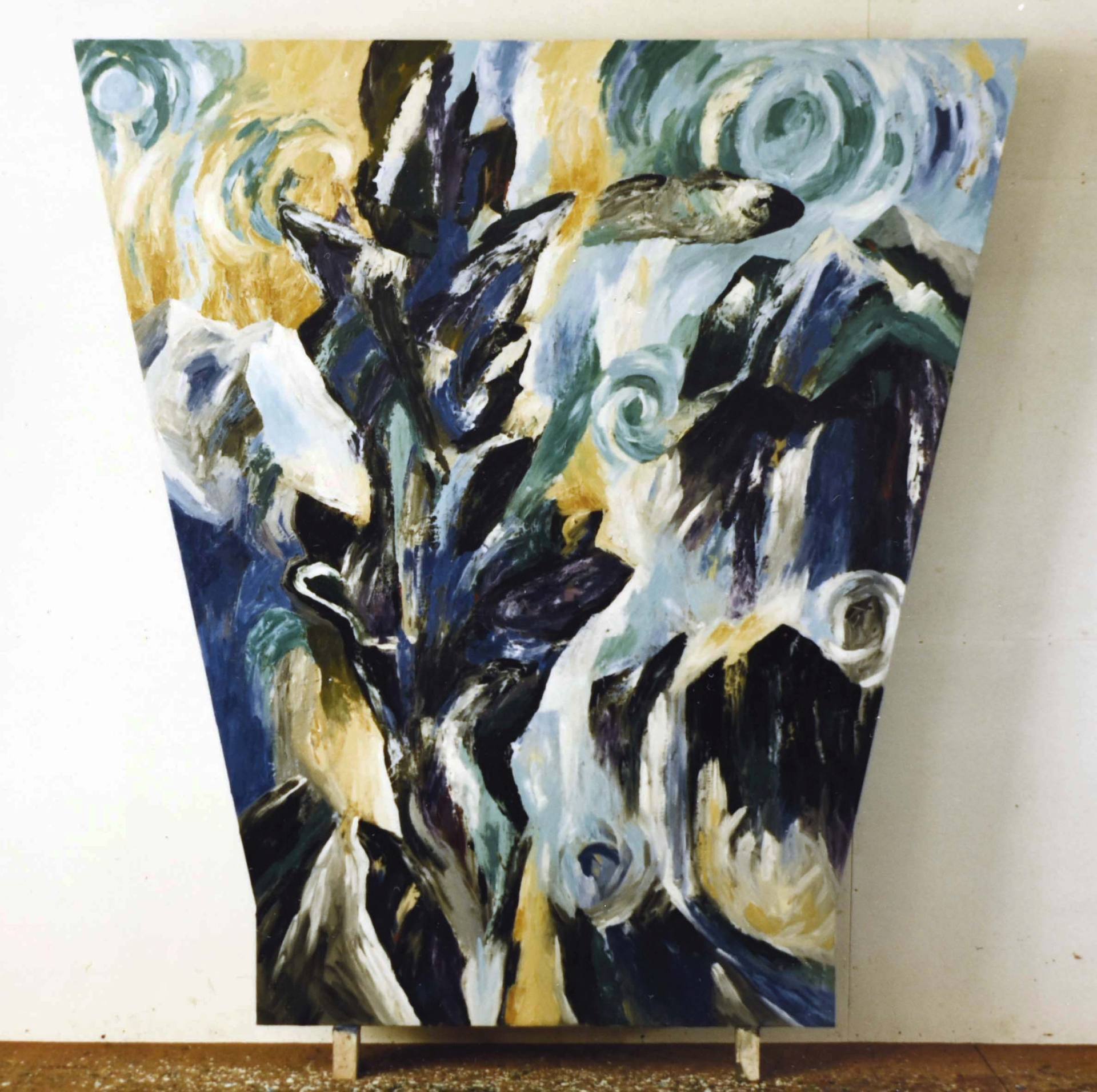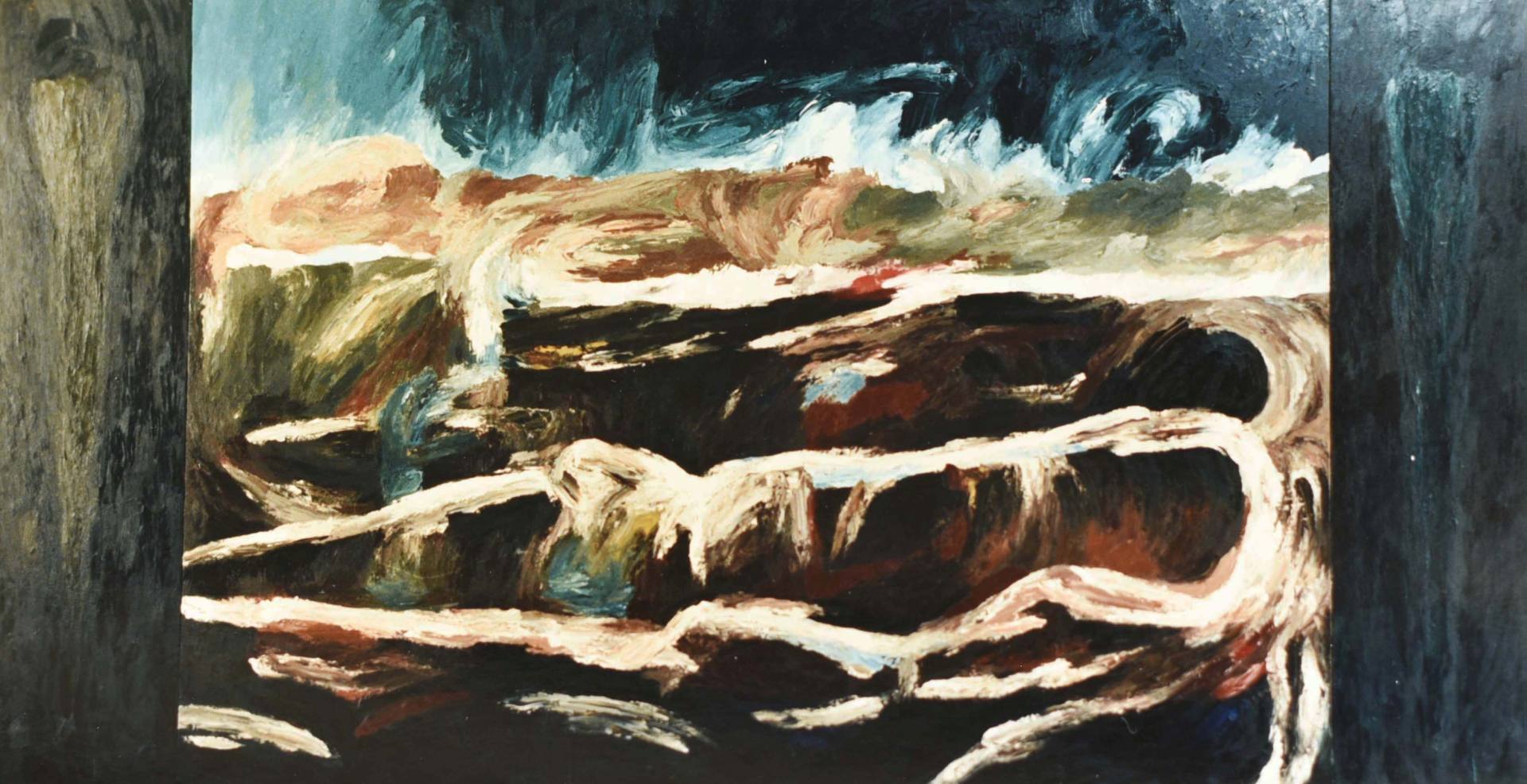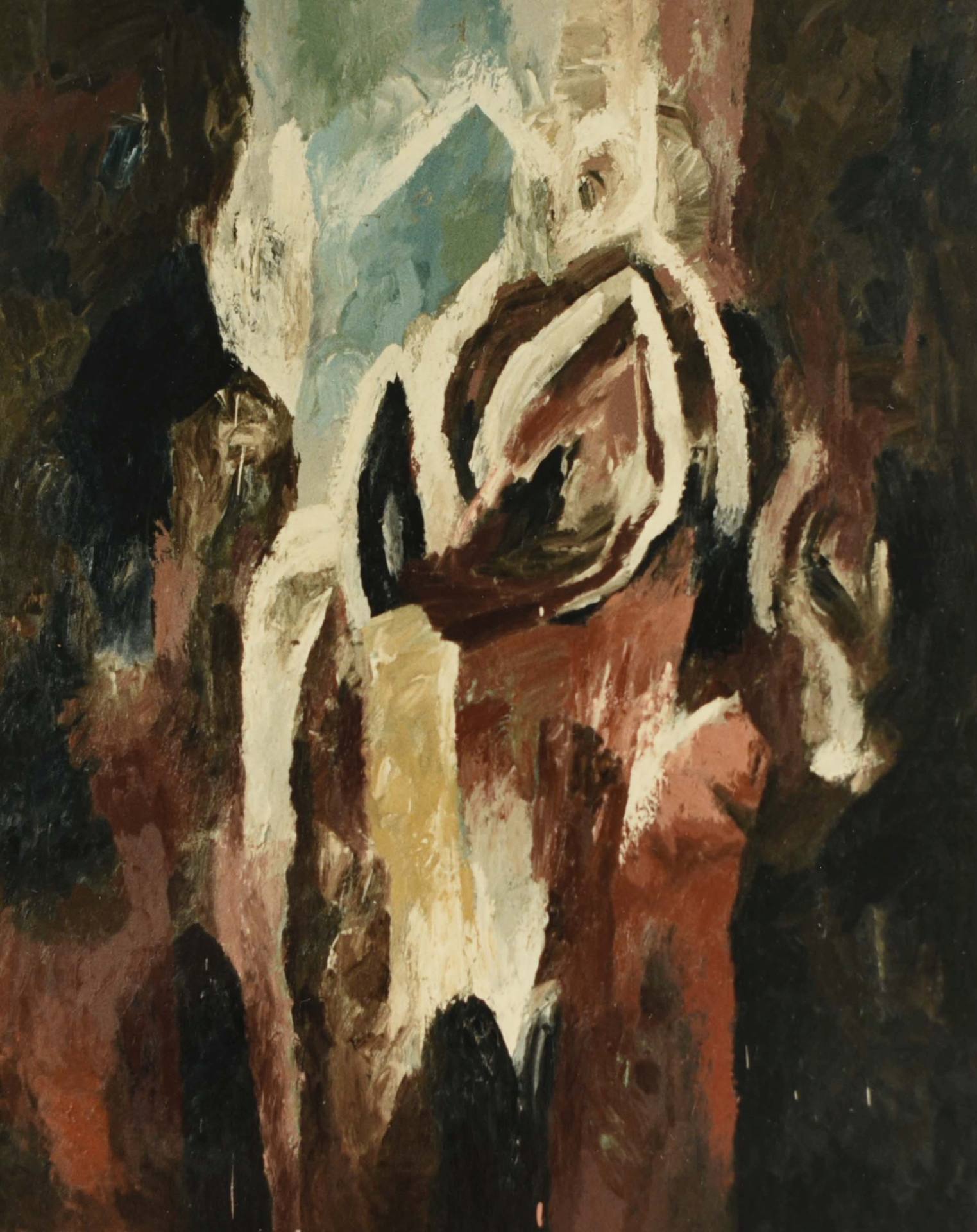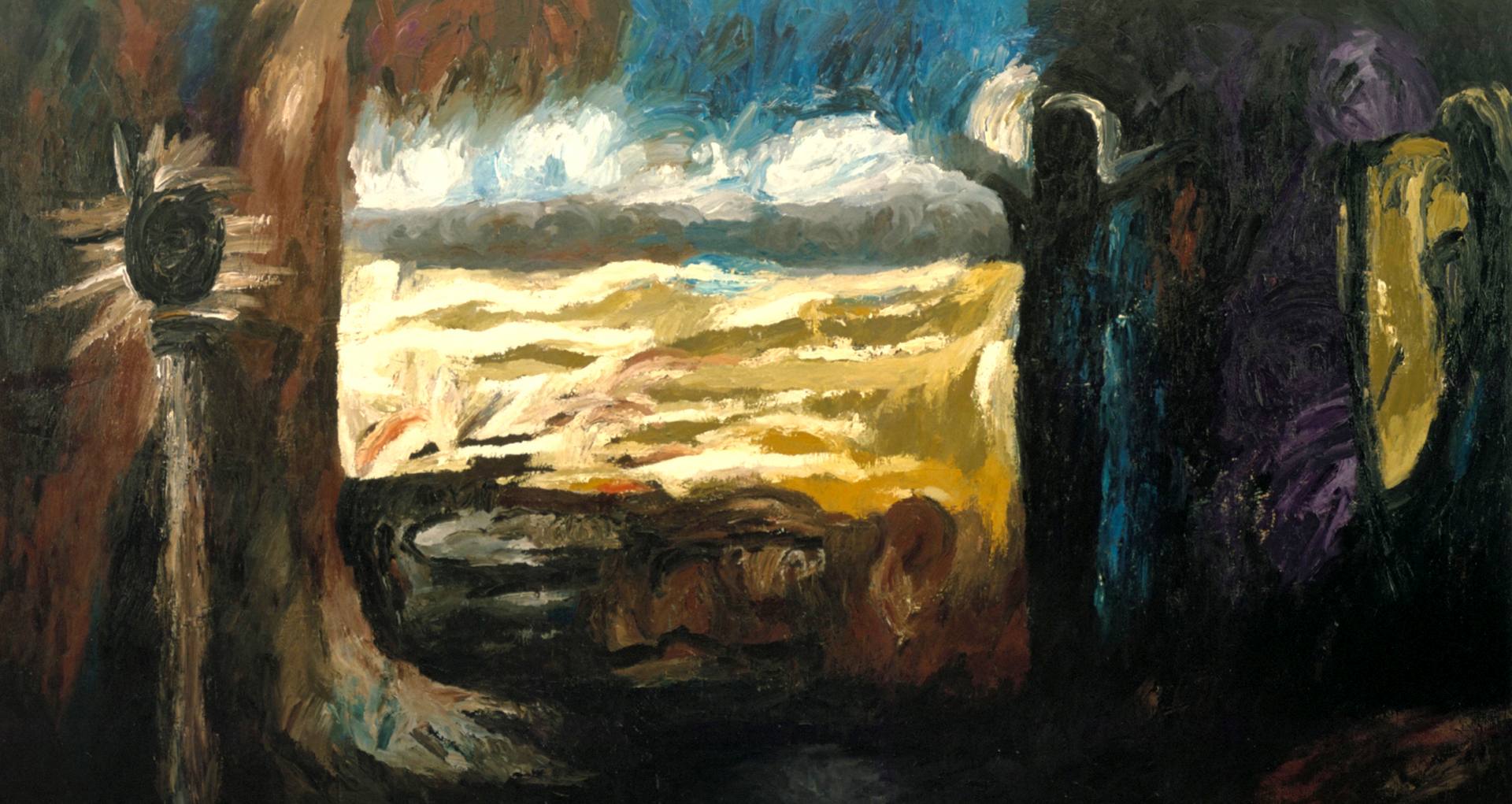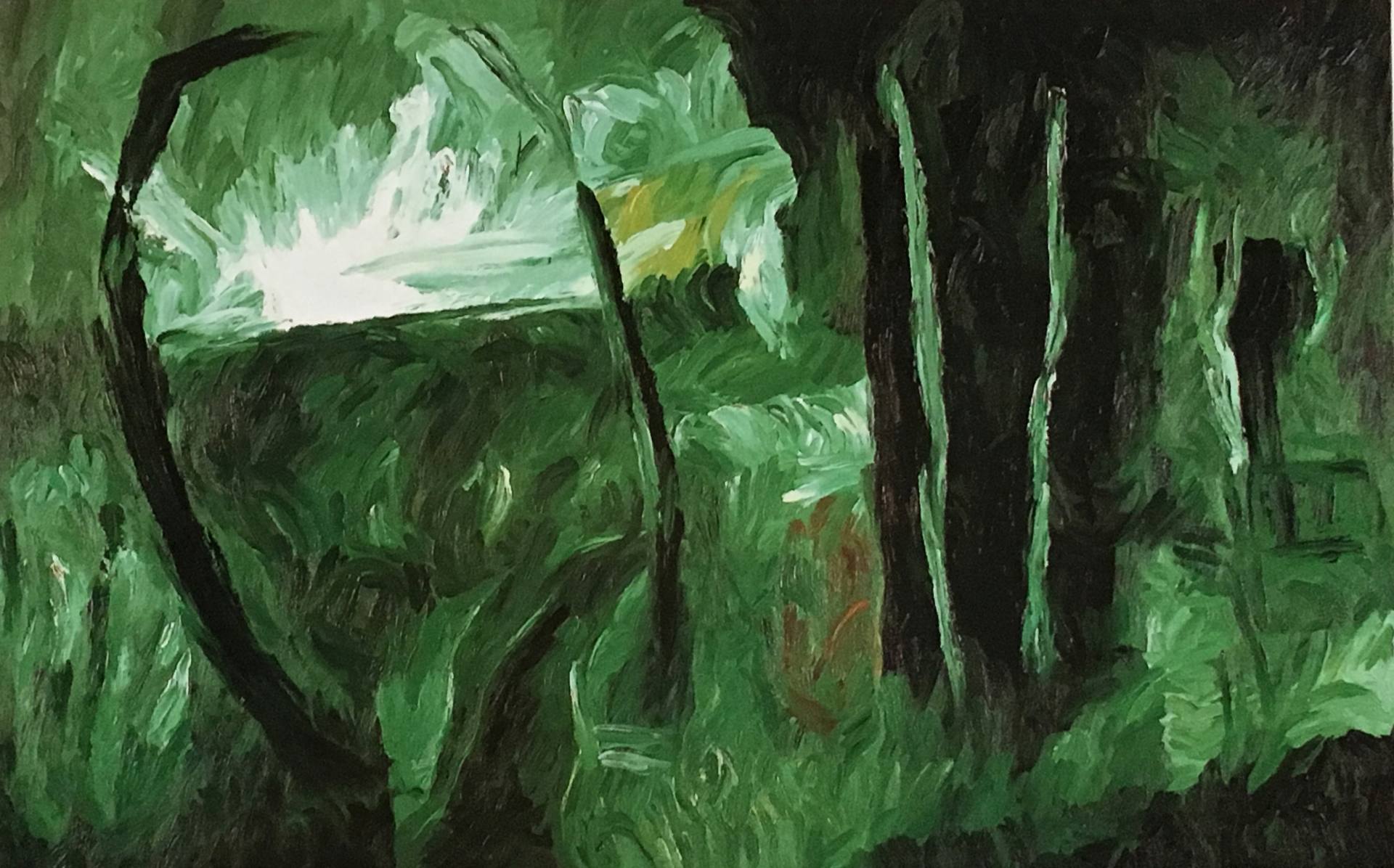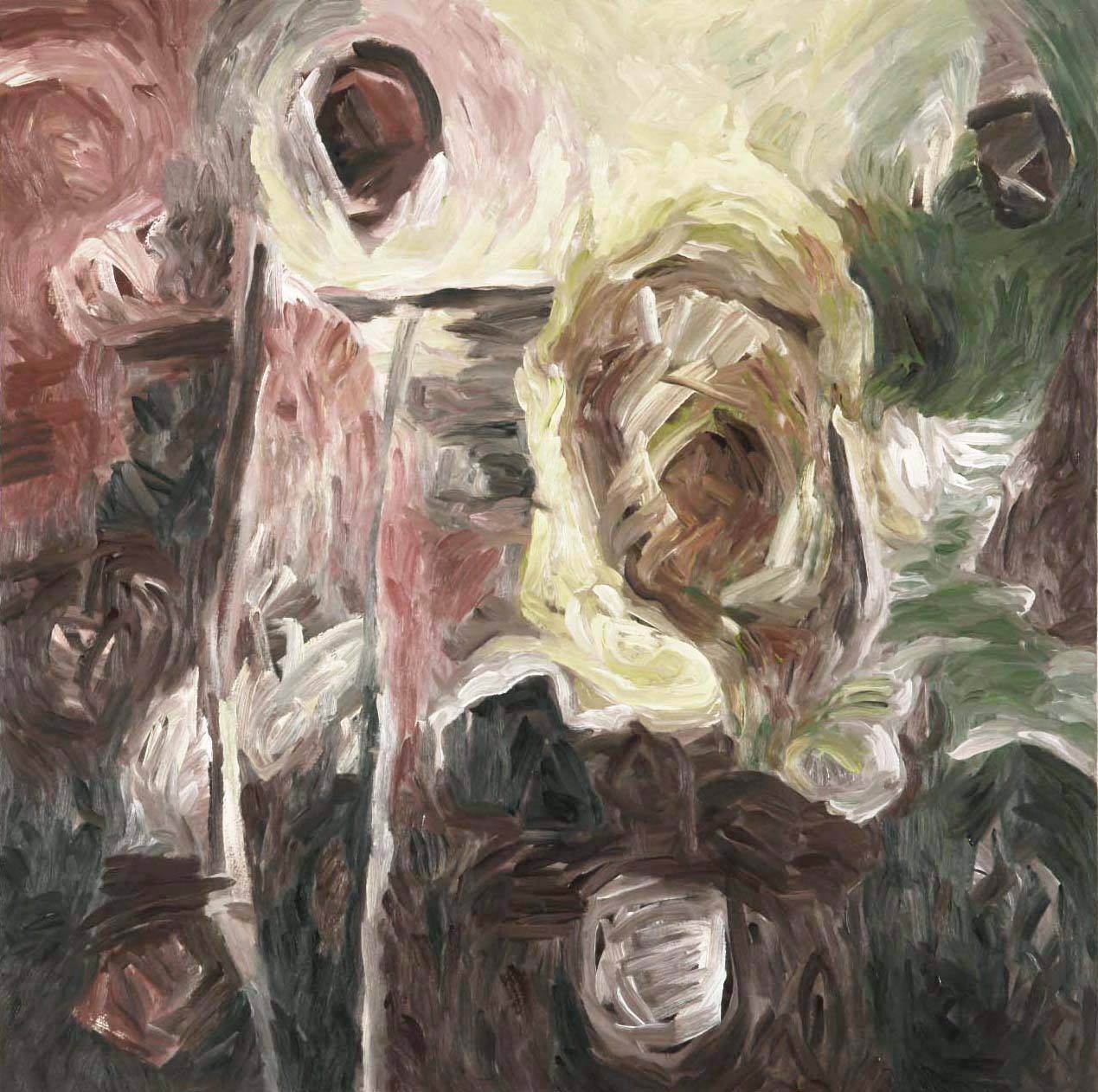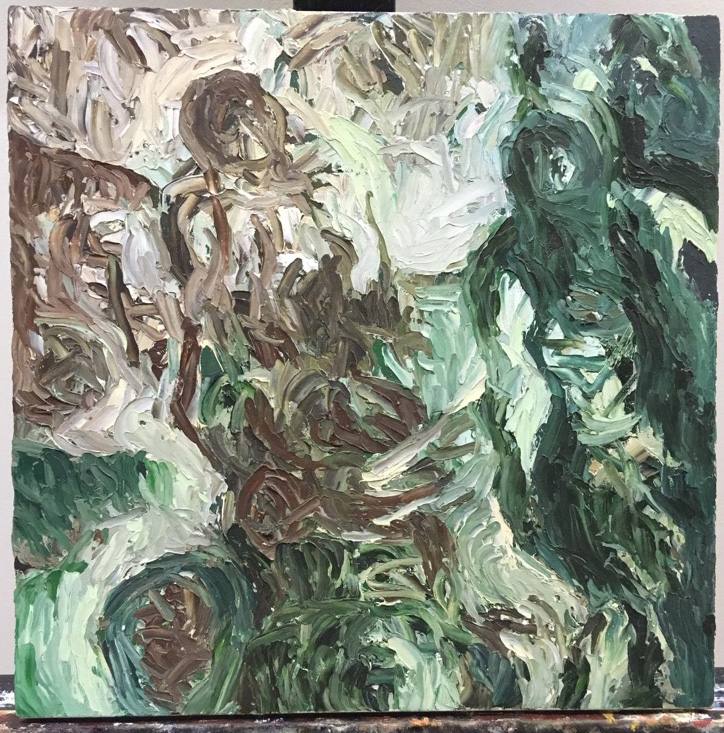80’s
4分割の長方形台紙に小さく切った色紙を貼付けていく−ただし長方形の対角線や中点と中点を結ぶ線分によって分割された面に、それぞれ主な色を置く−これが切り絵制作のルールであり、それは以後展開するエナメルペインティングにも踏襲された。しかしシステムが崩れ出し、イメージがどうしても出てきてしまう。そのイメージとは絵の根本を支える“Iconic”なものであるが日本の絵は“自然”からの形象で成り立っている。ここから「風景」シリーズが生まれた。風景シリーズの「風景」とは風景画の風景ではない。
「…その「風景」は掘り出したばかりの原石のようで異物で、しかもざらつき、ただ内側で光っている。そして人は、ここでいまだ人となりえないのだ。」—終局へのまなざし−3、(本江邦夫)「海燕」第3号から
The main color is placed on each side of the rectangle divided by diagonals or line segments connecting the midpoints of the rectangle. This was the rule of paper cutout production, which was followed in the enamel paintings that followed. However, the system broke down, and an image inevitably emerged. Although the image is the “iconic” one that supports the basis of the painting, paintings of Japan are made up of images from “nature. This is where the “Landscape” series was born. The “landscape” in the “Landscape” series does not mean the landscape of a landscape painting.
The “Landscape” is like a rough stone that has just been dug out of the ground, a foreign substance, rough and shiny inside. And here one cannot yet be a person.-Eyes on the end-(Kunio Motoe, from “Kaien” No. 3)



